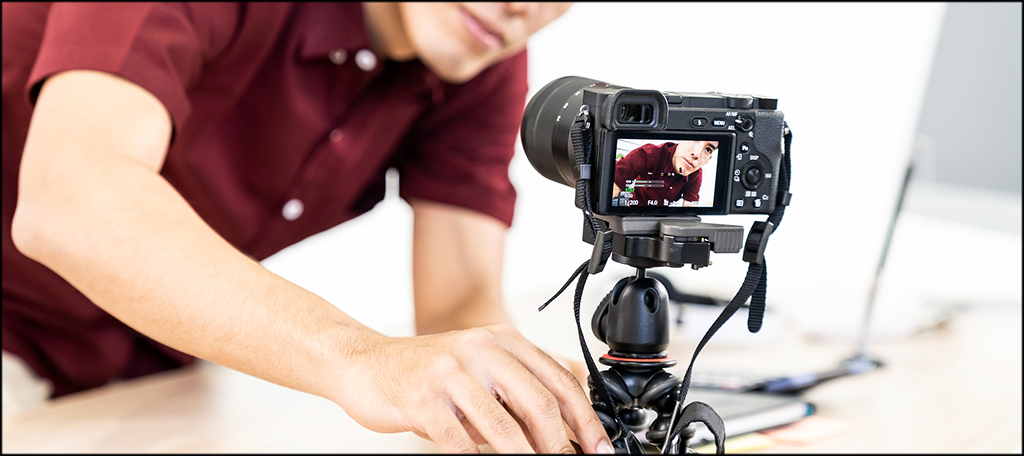COVID-19 has changed the way we live, learn, and do business. No longer can we host large events to interact with our audience or staff. Instead, businesses must find new ways to reach their audience during isolation. Luckily, there are many platforms available that can do just that. Today, I will be examining if using Crowdcast is ideal for reaching your audience when being in person is not ideal.
What Is Crowdcast?
Crowdcast is a live streaming platform that specializes in Q&A, webinars, educational courses, and business conferences. It is a great platform to host any of these events online. In fact, it’s the reason that WordCamp will be using the platform to host as many events as possible during this isolation period.
One of the main appeals of Crowdcast is the ability to create your event from one URL. Everything can be done from this URL including recording, registration setup, payment acceptance, email notifications, and so much more.
Thanks to this, creating an online event has never been easier. However, the easy set up is just the first advantage creators will find.
The quality of the event is far superior to that of the more well-known live streaming services like Twitch and Mixer. The platform boasts about a no-delay HD stream, which is ideal for any professional event.
This alone will dramatically improve a viewer’s experience since they will be able to seamlessly interact with the speaker.
And as a platform designed for business, you can expect a host of integration options. Using Crowdcast will not disappoint you in this regard. It is compatible with over 500 popular business apps.
This ensures that the majority of businesses will not have an issue integrating their workforce with the platform.
Virtual Vs. Physical Event

Before you can even begin to transition your events online, you need to understand the difference between a virtual event and a physical one.
For starters, in a virtual event, you are all alone. While this may sound obvious, this factor will dramatically change the mindset you need to have. Eye contact, posture, gestures, and many other important face-to-face meeting techniques are no longer intended for one person, they are for video content.
Talking on a stage is very different from a chair in front of a camera.
Many live event hosts will study the audience to see how well they are doing, and if things are not going well, they can change it up. Virtual events do not have this luxury. The only gauge you can use is a live chat, but you can’t very well stop mid-sentence to read the chat.
Thus, for the most part, you have no way of reading the audience until you are finished.
However, the presentation is just one part of an event. Most of the work is done prior. Most notably, the biggest difference is the planning you must do.
Obviously, in a physical event, you need to rent out a physical location, decorations, food, and other things that are only applicable to planning a physical event. Instead, a virtual event is self-contained.
Once you choose a platform to host it on, like Crowdcast, all you need to do is plan your actual event and market it to your intended audience.
Equipment Set-Up
While using Crowdcast can make setting up and hosting an event a cinch, it is not responsible for your actual recording equipment and the environment you do it in. Thus, you are going to need to ensure you have and know how to use the equipment properly.
Keep in mind that what you need largely depends on what type of event you are hosting and your audience.
Let’s take a look at what you will need.
Camera
The first piece of equipment that everyone thinks of when it comes to a live event is the camera they will use to record. The quality of the camera is extremely important. However, it largely depends on what you are using Crowdcast for.
For example, the camera you will need for hosting a conference for your business staff vs a Crowdcast webinar is extremely different.
While you do want to be formal in a staff meeting, employees are not going to buy a high-quality camera that records in 4k. No instead, there going to be using simple cameras like a phone or a built-in webcam on a laptop.
And that is perfectly acceptable, especially with current world conditions in mind.
However, if you are planning on launching a webinar, you better believe you need a full-fledged camera to ensure the event looks great.
Microphone
The second most important piece of equipment (or 1st for some) is the microphone. We do not live in the silent age of film. Sound quality is extremely important for any type of video content today.
In most cases, a built-in microphone on a laptop or phone will not cut it. These microphones pick up a lot of background noise. And trust me, you do not want your microphone to pick up your neighbor’s television or worse.
Instead, you are going to need to actually purchase a real microphone or a high-quality headset.
Keep in mind that if you are picking up background noise, you can adjust the sensitivity of your device. The process is unique for each.
Again it really depends on the type of event and the formality.
Background & Lighting
The last part of what you will need is your background. Many dedicate entire rooms to create the perfect backdrop for video. This can be divided into two main parts: the actual background and the lighting.
And again, the quality that you need depends entirely on what you are doing. I would not expect my boss to set up a green screen behind him for a normal work conference and neither should you.
The background consists of what else the audience will be able to see. Most commonly, large online events will utilize a greenscreen that they can use to virtually create the perfect scenery. However, these are pretty expensive.
Alternatively, you can create a set behind you. This is perfect if you plan to regularly use it for one event and can be much cheaper.
The lighting makes sure visitors can see you and the carefully crafted background perfectly.
Unfortunately, lighting is one of those things many content creators learn about the hard way. A camera requires a certain amount of light to produce a high-quality image. Without the proper lighting, your camera choice and background construction are rendered meaningless.
Stable Internet
Lastly, and probably the most important, is your internet connection. You need to have very stable access online. Otherwise, your event will not be live for long. Crowdcast recommends a minimum of 5 Mbps download and 2 Mbps upload.
Although, the faster your internet, the safer it will be.
It is highly recommended that you do not host any virtual event on a wi-fi connection. Instead, you should ensure that your computer is connected directly to your modem. This will make you less susceptible to sharp quality dips that could take your virtual meeting offline early.
If you find yourself in a situation where this kind of internet quality cannot be achieved at home, I strongly recommend contacting your ISP. Online events do not work without the internet.
Pre-record Vs. Livestream

Crowdcast offers creators the ability to not only host live events, but schedule pre-recorded content. However, the key is understanding when to use which type.
For example, a Q&A can take on many forms. This can be pre-recorded where the creator carefully picks out comments or requests fans to submit their own questions and then proceeds to answer them.
Alternatively, you could do a live Q&A, which has commonly been called an “Ask Me Anything,” or AMA. Both approaches completely work, but obviously each one has a few advantages.
If the one asking the question is unclear, or if everyone is unclear, you can try to reword your answer or make it understandable. On the flip side, if you make a mistake live, it’s out there for everyone to see.
In pre-recorded content, you can watch it and scan it for mistakes to ensure you are releasing the content at an acceptable quality level. It helps you deliver the intended message that can sometimes get lost in a live presentation.
Luckily, Crowdcast does not limit you to one approach. You could schedule a pre-recorded presentation of a new product or service your business offers and then hold a live Q&A to make sure your staff understands it.
Finding the right combination between live and pre-recorded content is different for every content creator.
Be Concise
With a physical audience, when a show drags on too long or you hit a boring part, audience members will take a bathroom break or look at their cellphones. However, it’s far worse in a virtual setting.
At any moment, a visitor could open up a new tab on their browser or second monitor and completely tune out your show.
To avoid this, virtual events are recommended to remain short with 90 minutes being the maximum. To achieve this, you need to ensure your show is concise and keeps the audience paying attention.
Another approach is to break up your event into smaller “bite-sized” pieces.
For example, instead of a 90-minute presentation of WordPress, it would make more sense to break it up into smaller videos. A separate video for what WordPress offers, plugins, themes, page design, and more.
Rehearse Your Event Within Crowdcast And Prepare For Tech Trouble

Unfortunately, many live events do not go well because users do not test everything within the environment. They are also not prepared to handle the myriad of things that can go wrong tech-wise.
And trust me, your audience does not want to watch you resolve a technical issue at all, let alone for a prolonged period of time.
Luckily, you can launch a private show in Crowdcast that you can use as a way to rehearse your content and see how it looks on the visitor’s end.
I strongly recommend rehearsing a few times. This provides you the practice required to ensure your event goes well and you get more opportunities to ensure your set up is working, the internet is stable, and most importantly, the know-how to fix any issues that may arise quickly.
Promote Your Event on Your Website or Create An Event Site
Don’t forget to use your website to properly promote your live event. Mention it in your blog posts, create an events calendar, and put it on your homepage. The point is to make sure a visitor on your website knows about the event, when it is, and how to watch it.
If you do not have a website, you should create an event website immediately. For example, every single WordCamp has a unique website that outlines when the event will be, who is speaking, its location, and much more.
However, unlike WordCamp, which is a very large organization and has the resources to create multiple websites, I’d recommend using just one. Think of your event website as a pamphlet that helps visitors know what to expect and sell them a ticket, or just alert them if it is free.
Many developers will set up landing pages specifically for the event and then share the link on social media. It’s more effective than you might think, especially if you’re hosting an event that your audience wants to see.
Crowdcast Is Perfect for Events
Crowdcast provides all of the necessary tools that any website or business needs to reach a target audience online. You can use it to put together any kind of online event and connect it with over 500 apps that small businesses around the world utilize.
It provides creators with the ability to use both pre-recorded videos and live streams with their audience or staff. This allows you the opportunity to present high-quality video content to your user base and the ability to follow up with live Q&As or any other type of content combo.
The limiting factor is not the platform, but your equipment and imagination.

